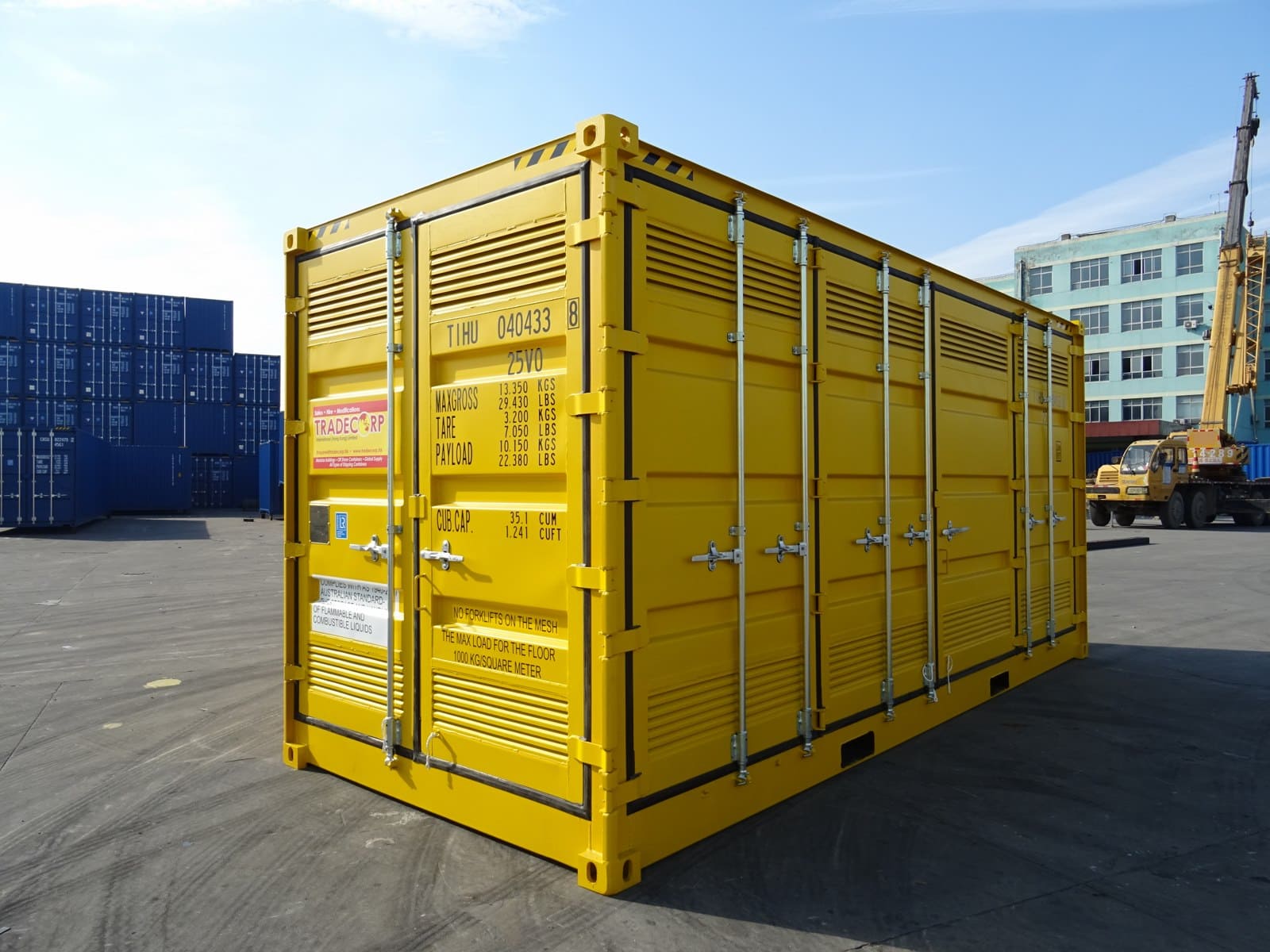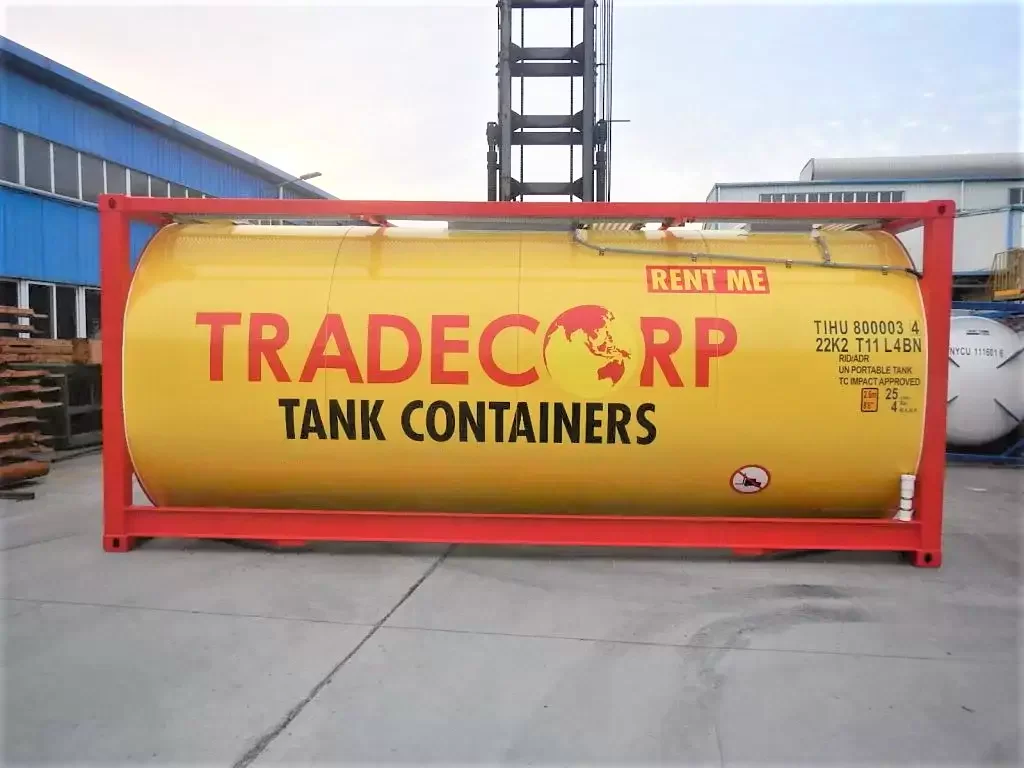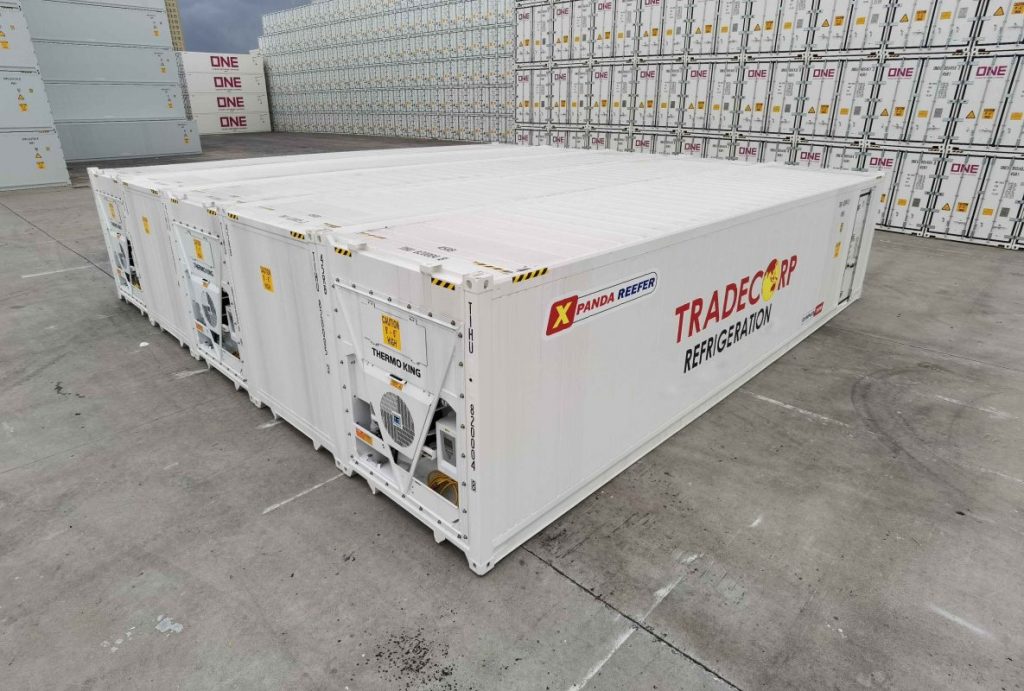Today, it seems impossible not to use a ship container to transport precious cargo across long distances. It is durable, secure, and cost-effective, making it perfect for use by any business and individual.
Unfortunately, there are certain cargo types even a shipping container is not allowed to carry. If not handled well, these goods can cause disastrous consequences such as fires, contamination, environmental damage, or even legal trouble.
As such, let’s learn as much as possible about items you can’t carry in a standard ship container to keep your business from trouble!
Also Read: How Much Does a Shipping Container Weigh: A Breakdown
Why Standard Shipping Containers Cannot Carry Dangerous Goods
At first glance, standard shipping containers seem like indestructible steel boxes designed to transport anything. While they are incredibly tough and secure, they lack the necessary features to transport hazardous materials safely.
A standard shipping container is not designed to contain leaks, control temperature, or ventilate dangerous gases. If something inside catches fire, releases toxic fumes, or spills, a regular shipping container can quickly become a major hazard.
Some of the key reasons why standard shipping containers are unsuitable for dangerous goods are:
- Lack of specialized ventilation
Without proper airflow, hazardous fumes or flammable gases can build up inside and increase the risk of explosions or poisoning.
- No temperature control
Perishable goods and certain chemicals require stable temperatures to stay safe. Standard containers trap heat, making them unsuitable for sensitive materials.
- No advanced spill containment
Toxic or flammable liquids can leak and spread inside a container, causing environmental damage or putting workers at risk.
- Weak structural integrity for hazardous goods
While strong enough to handle standard cargo, regular containers are not reinforced to handle pressurized, explosive, or corrosive substances.
Additionally, agencies like the International Maritime Organization (IMO) and the International Air Transport Association (IATA) strictly dictate how to transport hazardous materials.
Attempting to move dangerous goods in the wrong container can lead to shipment rejection, heavy fines, or even criminal charges. Because of that, it’s important to know which items should never be transported in a standard shipping container.
Types of Dangerous Goods Unsuitable for a Ship Container
While shipping containers can carry many cargo types, certain categories of goods should never be stored or transported in a standard unit.
So, what are the materials you should never store and transport with a standard ship container?
Explosive Materials

It should be clear that explosives and highly reactive chemicals are not suitable for standard shipping containers. These materials can cause accidental detonation if exposed to heat, impact, or pressure changes.
Some examples of explosive materials that should never be transported in a regular shipping container include:
- Fireworks
- Dynamite and TNT
- Ammunition and gunpowder
- Blasting caps and detonators
- Highly reactive chemicals that can explode when mixed
Shipping containers are not built to withstand internal explosions. If an explosion happens inside a container, it could cause catastrophic damage to the cargo and the surrounding equipment and environment.
Additionally, standard containers trap heat inside, making them extremely dangerous for explosive materials. Because of that, using standard containers to store and transport explosive materials is definitely out of the question.
Flammable Materials

Flammable materials are another category of goods that should never be stored in a standard shipping container. These items can easily ignite if exposed to heat or a spark that leads to devastating fires or explosions.
Common flammable materials that should not be transported in a regular container include:
- Gasoline, diesel, and jet fuel
- Alcohol-based products like ethanol and hand sanitizers
- Pressurized gases (propane, butane, oxygen cylinders)
- Flammable paints, solvents, and adhesives
- Certain industrial chemicals used in manufacturing
If you’re not careful, a single spark or heat buildup inside the container could lead to a major disaster. Additionally, if flammable chemicals spill or leak, they can create toxic fumes or contaminate other cargo.
Illegal Items

It might seem obvious, but illegal goods should never be stored or transported in a shipping container. This includes items that are banned by governments or international trade laws, such as:
- Drugs and controlled substances
- Illegal weapons and firearms
- Counterfeit products (fake brand-name goods, fraudulent documents, etc.)
- Endangered animal products (ivory, exotic animal skins, poached wildlife)
Authorities often inspect shipping containers using X-ray scanners, sniffer dogs, and manual searches to prevent smuggling. If they find illegal goods, you can suffer anything like severe fines, legal action, and permanent shipping bans.
Military Equipment

Transporting military-grade weapons, explosives, or classified technology in a standard shipping container is strictly prohibited in most cases.
Governments regulate who can move military goods and how they should be transported. Some restricted items include:
- Guns, ammunition, and military explosives
- Missiles and weaponized drones
- Classified communication or surveillance devices
- Advanced military technology
Even further, militaries often use specialized military shipping containers instead of standard containers to transport their equipment. Built with specific constructions, these special containers are only used for military purposes and not public, much less commercial ones.
Perishable Items

Perishable goods spoil quickly without proper temperature control, making standard shipping containers unsuitable for:
- Fresh produce (fruits, vegetables, dairy, meat)
- Frozen foods
- Medical supplies like vaccines and blood samples
- Live plants and flowers
If you store perishables in a regular container, they can spoil within hours, leading to financial losses, health risks, and waste.
Toxic Materials

Toxic materials pose serious risks if they leak, spill, or release dangerous fumes. These include:
- Pesticides and industrial chemicals
- Corrosive substances like acids and strong alkalis
- Radioactive materials
- Mercury and asbestos
While standard shipping containers have baseline capability to prevent liquid leaks, you shouldn’t tempt fate by transporting dangerous chemicals using them. You should only do so using certain container types we’ll explain below.
Dangerous Goods Containers: The Safe Alternative
If the materials above are so dangerous to transport, then how can even people transport them elsewhere without fear of material loss or legal problems?
The answer is actually simple: Dangerous Goods (DG) Containers!
Unlike a regular ship container, these special containers are far more capable of handling dangerous goods that can be damaging. Protected with fire-resistant, liquid-proof linings, and other features, companies often use these containers to transport dangerous materials.
To give you an idea of how dangerous goods containers look like, here are the examples:
Hazmat Container

Short for Hazardous Material, this container type is what you’ll need if you need to transport things like chemical solutions and products. Commonly having lengths from 8 to 20 feet, these containers have bunded flooring and drainage valves to protect their cargo.
ISO Tank Container

Reinforced with shipping container construction, these tank containers can carry bulk liquids in a way a standard container can’t do. Furthermore, depending on the cargo types they carry, ISO tank containers are categorized into the following:
- T1: Wine and light liquids
- T3: Asphalt
- T4: Non-hazardous edible and non-edible oils
- T11: Non-hazardous chemicals
- T14: Hazardous chemicals and acids (HCI, zinc chloride)
- T20: Corrosive liquid chemicals (hydrochloric acid, ferric chloride solution, sodium hypochlorite, hydrofluoric acid)
- T50: Gasses (LPG, ammonia)
- T75: Cryogenic gasses
Refrigerated Container

Refrigerated (or reefer) containers can protect perishables thanks to their built-in refrigerator machines, which keep them frozen. Users can freeze perishables in an environment similar to a refrigerator in households.
Also Read: How Many Containers On a Container Ship from Each Ship Type
Conclusion
By knowing which items you can’t carry in a standard ship container, you can help protect your company from improper cargo handling and so many other problems. To help customers with that need, Tradecorp is ready to provide its dangerous goods containers for rent and sale. Contact Tradecorp today via its quote form, and we’ll reply immediately to source the best DG container for you!

